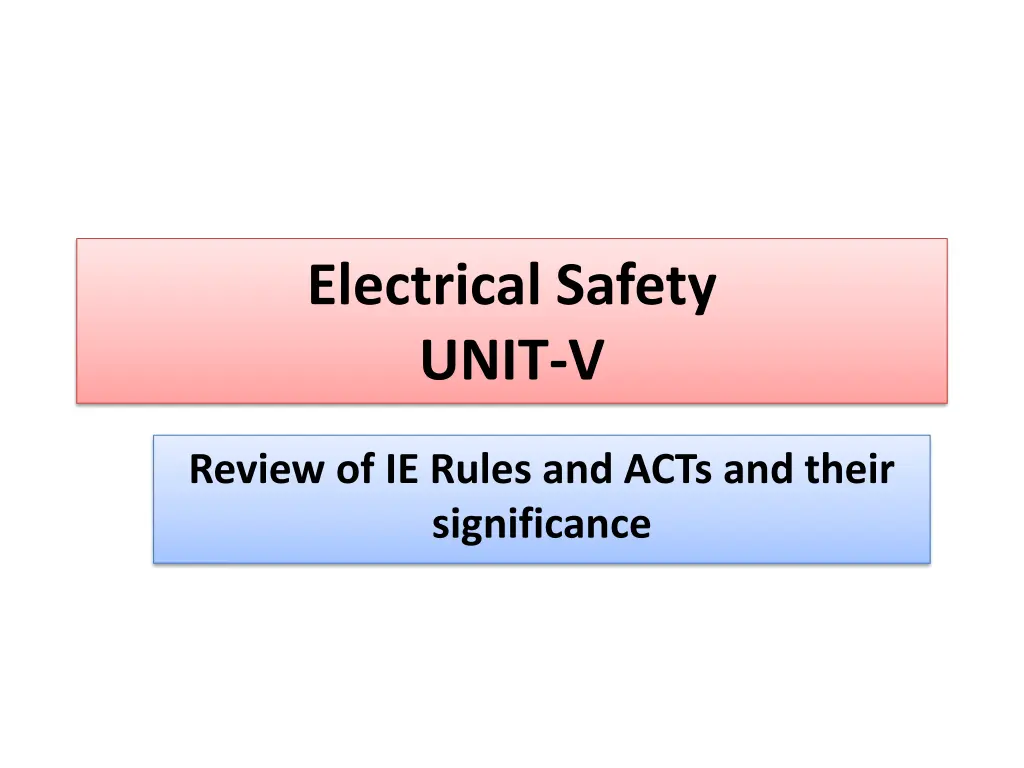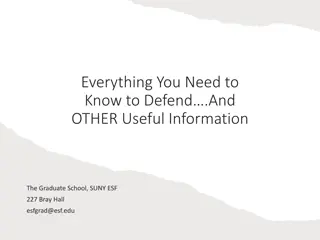
Review of Electrical Safety Guidelines and Lightning Protection Measures
"Explore the importance of IE rules and acts in ensuring electrical safety, along with insights on ground clearances, section clearances, and protection from lightning strikes. Learn about the significance of shield nets and how to calculate tower heights for lightning protection equipment. Discover expert solutions to common problems in lightning discharge tower placement."
Download Presentation

Please find below an Image/Link to download the presentation.
The content on the website is provided AS IS for your information and personal use only. It may not be sold, licensed, or shared on other websites without obtaining consent from the author. If you encounter any issues during the download, it is possible that the publisher has removed the file from their server.
You are allowed to download the files provided on this website for personal or commercial use, subject to the condition that they are used lawfully. All files are the property of their respective owners.
The content on the website is provided AS IS for your information and personal use only. It may not be sold, licensed, or shared on other websites without obtaining consent from the author.
E N D
Presentation Transcript
Electrical Safety UNIT-V Review of IE Rules and ACTs and their significance
Ground clearances and Section clearances Ground clearances Section clearances Lightning Discharge Tower (K=1.6) OHGW (K=1.2) The distance between the towers (D) is a function of the desired minimum height of the shield net at the middle points between the towers (H0), where F is a constant that is equal to 7 for lightning discharge tower and 4 for OHGWs.
Protection from Lightning Strikes Several protection devices that can be used to reroute the energy of the lightning bolt into ground, thus reaching important equipment. Among these devices are lightning poles, lightning discharge ground wires (OHGWs), spark gap, and surge arresters. preventing structures it from or towers, overhead
Section clearances: Shield net or Protective zone of lightning discharge tower
Problem: maximum lateral distance between the tower A 30 m tall lightning discharge tower is erected to protect substation equipment. The equipment is 10 m in height and 4 m wide. Compute the distance between the equipment. Rx = ? maximum tower lateral this and Since the width of the equipment is 4 m, the inner side of the equipment should not be more than 20 m from the tower.
Problem: Computing adequate height for the towers Two lightning discharge towers of equal heights are separated by 210 m. Compute the height of the towers that protect 10 m cubical equipment at the midline between the towers. Sol: The height of the tower: D = 7(Ho-H) H = 40 m. The width of the protective area is
Overhead Ground Wire Transmission lines pass through plain areas where the towers and their conductors are the highest conductive objects above ground. These towers are prime targets for lightning strikes; almost worldwide are attributed to lightning damages. To protect transmission lines, utilities install OHGWs at the top of the towers and for the length of the transmission lines. These OHGWs are grounded at the substations and at all towers. Since the OHGWs are the highest grounded objects along the transmission lines, they collect the lightning bolts and disperse them protecting the transmission line conductors below them from direct lightning strikes. 20% of all outages into the ground, thus
For the transmission line tower shown in Figure, compute the height of a single OHGW wire that protects all phases.
If conductors are also protected we protect the top cross arms, all other where K = 1.2 for OHGW. For conductor b, Hx = 35 m and Rx = 10 m. Hence, Solving the previous equation leads to an OHGW s height of 49.25 m, which would require the OHGW to be about 15 m above the top cross arm. This is an unrealistic tower size and more than one OHGW is needed.
Electrical Safety Standards Minimum safe un-energized voltage is 50 Volts without safety tools, during maintenance. Branch Circuit Sizing: Single phase 120 volts, 15-20 Amps circuit GFCI - 4-6 mA AFCI 30 mA Branch circuit OCPD (overcurrent protection devices) must have an ampacity of no less than 125% of the continuous loads, plus 100% of the noncontinuous loads. Conductor sizing
Feeder sizing and Feeder Loads To protect feeder circuits, you must install overcurrent protection. If a feeder supplies a continuous load, or continuous and non-continuous loads, then the OCPD cannot be rated any less than the non-continuous load continuous load amperage. The ampacity cannot be less than 125% of the full-load current rating plus the calculated load of the electric heat. a combination of plus 125% of the
The service disconnect limitations 15 A minimum for disconnects to a service for the limited loads circuits 30 A minimum for disconnects to a service for no more than two two-wire branch circuits 100 A minimum for disconnects to a single- family dwelling service 60 A minimum for disconnect means of single branch all other service
Fuses and conductor size limitation standards All fuses are straight voltage rated, but some circuit breakers are slash voltage rated at 480/277 V, 240/120 V, or 600/347 V The OCPD cannot exceed the following: 15 A for 14 AWG 20 A for 12 AWG 30 A for 10 AWG 15 A for 12 AWG and 25 A for 10 AWG aluminum and copper-clad aluminum after any correction factors for ambient temperature and number of conductors have been applied
Clearance safety There must be at least 1 inch of airspace between a cabinet door and any live metal parts, including fuses. Conductors in an enclosure overcurrent devices cannot fill the wiring space by more than 40% of the crosssection area inside the enclosure and they cannot fill the cross-sectional area of the space by more than 75%. Switchboards that are not totally enclosed must have a clearance of 3 feet from the top of the switchboard to a ceiling constructed of wood, drywall, or any other combustible material. for switches or
ARC WELDING Each protection rated no less than 200% of the rated primary current of the welder. Because of the overheating conductors, welding cable has requirements other conductors don t have. welder must have overcurrent safety risks from






















